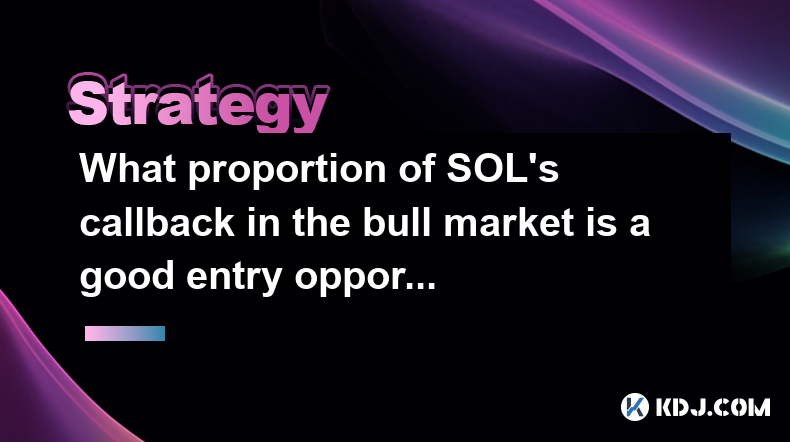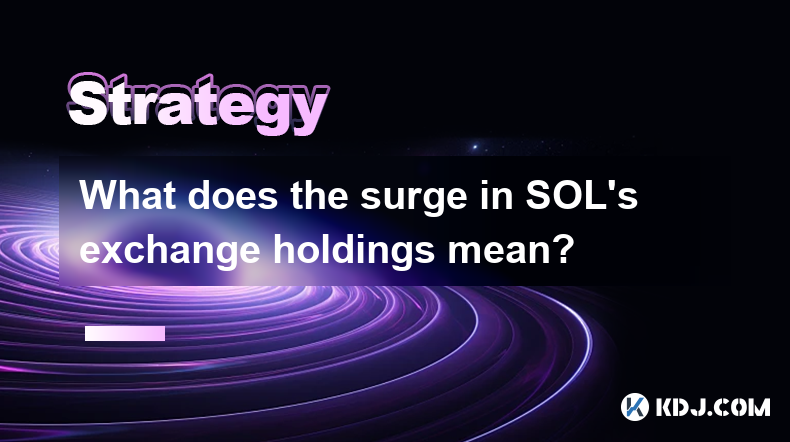-
 Bitcoin
Bitcoin $88,555.6766
1.18% -
 Ethereum
Ethereum $1,626.4043
-1.22% -
 Tether USDt
Tether USDt $0.9998
-0.01% -
 XRP
XRP $2.1018
-1.27% -
 BNB
BNB $605.8750
0.04% -
 Solana
Solana $140.3422
0.04% -
 USDC
USDC $0.9999
0.00% -
 Dogecoin
Dogecoin $0.1643
1.27% -
 TRON
TRON $0.2481
1.05% -
 Cardano
Cardano $0.6359
-1.63% -
 Chainlink
Chainlink $13.3216
-2.53% -
 UNUS SED LEO
UNUS SED LEO $9.1797
-2.79% -
 Avalanche
Avalanche $20.3681
-2.52% -
 Stellar
Stellar $0.2473
-4.43% -
 Sui
Sui $2.3043
2.50% -
 Shiba Inu
Shiba Inu $0.0...01257
-1.15% -
 Toncoin
Toncoin $2.9429
-3.48% -
 Hedera
Hedera $0.1738
0.16% -
 Bitcoin Cash
Bitcoin Cash $347.0587
1.49% -
 Hyperliquid
Hyperliquid $18.2576
-0.35% -
 Litecoin
Litecoin $79.8456
-0.89% -
 Polkadot
Polkadot $3.7809
-4.73% -
 Dai
Dai $0.9999
-0.01% -
 Bitget Token
Bitget Token $4.4439
-0.50% -
 Ethena USDe
Ethena USDe $0.9991
-0.01% -
 Pi
Pi $0.6313
-0.96% -
 Monero
Monero $216.2035
0.57% -
 Pepe
Pepe $0.0...08138
3.46% -
 Uniswap
Uniswap $5.3889
-1.68% -
 OKB
OKB $50.9281
-0.23%
What are the risks of arbitrage trading that need to be paid attention to?
Arbitrage trading faces risks stemming from imperfect market information, liquidity constraints, transaction costs, execution issues, legal and regulatory hurdles, cybersecurity threats, and the psychological stress of rapid decision-making.
Feb 25, 2025 at 05:42 pm

Key Points:
- Risk of Imperfect Market Information: Arbitrage relies on exploiting price discrepancies between different exchanges or markets. However, market information, such as real-time exchange rates or order books, may be incomplete or delayed, leading to inaccurate trading decisions.
- Liquidity Constraints: Successful arbitrage trades require sufficient liquidity across the target markets to execute buy and sell orders at desired prices. Limited liquidity can make it difficult to complete trades quickly, which can erode potential profits or result in losses if market prices change.
- Transaction Fees and Spreads: Arbitrage trading involves multiple transactions across exchanges, each incurring transaction fees and bid-ask spreads. These costs can eat into potential profits and reduce the viability of the trading strategy.
- Execution Risk: Arbitrage trades often rely on rapid execution to take advantage of short-lived price differences. However, technical issues, such as order failures, delays, or platform outages, can disrupt trades and result in losses if prices revert.
- Legal, Regulatory, and Exchange Risks: Cryptocurrencies and arbitrage trading may be subject to varying legal and regulatory frameworks in different jurisdictions. Compliance obligations, exchange restrictions, or anti-arbitrage measures can create additional risks and uncertainties for traders.
- Cybersecurity Risks: Cryptocurrency exchanges and decentralized platforms are vulnerable to hacking and cyber threats that can compromise funds and disrupt trading activities. Arbitrage traders must implement robust cybersecurity measures to protect their assets and trading strategies.
- Emotional and Psychological Factors: Arbitrage trading can involve high levels of stress and emotional challenges. The need for quick decision-making and the potential for substantial profits or losses can lead to impulsive or irrational trading behaviors, which can increase risks and reduce trading performance.
FAQs:
1. What is the best time to arbitrage?
The most favorable time to arbitrage is when there is a significant price discrepancy between different exchanges, and there is sufficient liquidity to execute trades quickly. Arbitrage opportunities can arise due to factors such as sudden market events, news announcements, exchange outages, or differences in exchange fees.
2. How much capital do I need for arbitrage trading?
The capital required for arbitrage trading varies depending on the specific strategy and the target markets. Generally, it is recommended to have sufficient capital to cover potential losses, transaction fees, and any sudden price fluctuations that may occur during the trading process.
3. Is arbitrage trading legal?
Arbitrage trading is generally considered legal in most jurisdictions, as it involves exploiting price inefficiencies rather than manipulating markets. However, certain regulatory restrictions or anti-arbitrage measures may apply in specific regions. It is advisable to stay updated on local laws and regulations regarding cryptocurrency trading.
4. What are some common arbitrage strategies?
Common arbitrage strategies include:
* **Cross-Exchange Arbitrage:** Exploiting price differences between different cryptocurrency exchanges
* **Triangular Arbitrage:** Converting a cryptocurrency to multiple intermediary assets to take advantage of multiple price inefficiencies
* **Statistical Arbitrage:** Using statistical models to identify and exploit patterns or anomalies in market data
5. What are the risks of arbitrage trading?
As mentioned in the key points above, arbitrage trading comes with inherent risks such as market information imperfections, liquidity constraints, transaction costs, execution risks, legal and regulatory challenges, cybersecurity threats, and emotional or psychological factors that can impact trading decisions.
Disclaimer:info@kdj.com
The information provided is not trading advice. kdj.com does not assume any responsibility for any investments made based on the information provided in this article. Cryptocurrencies are highly volatile and it is highly recommended that you invest with caution after thorough research!
If you believe that the content used on this website infringes your copyright, please contact us immediately (info@kdj.com) and we will delete it promptly.
- Bitget Exploited: Market-Maker Bot Glitch Triggers $100M Trading Frenzy, Turning $VOXEL into a Crypto Storm
- 2025-04-22 16:40:12
- MANTRA CEO John Patrick Mullin announces plans to burn 300 million OM tokens to stabilize market price after recent massive price crash.
- 2025-04-22 16:40:12
- What is Hyperlane? It is a framework for enabling interoperability among different blockchain networks
- 2025-04-22 16:35:12
- Mantra Burns 16.5% of Its Total Supply to Boost Staking Rewards
- 2025-04-22 16:35:12
- Why Is Polygon (POL) Price Up?
- 2025-04-22 16:30:13
- Can Cardano's Triangle Breakout Drive ADA Price Higher?
- 2025-04-22 16:30:13
Related knowledge

Can LTC buy the bottom after three consecutive negative weekly lines?
Apr 22,2025 at 04:36pm
The question of whether Litecoin (LTC) can buy the bottom after three consecutive negative weekly lines is a nuanced one, often influenced by various market factors, technical analysis, and sentiment within the cryptocurrency community. To delve into this, we need to consider the technical indicators, historical patterns, and the broader market context....

How to use trading volume to determine the buying and selling timing of BCH?
Apr 22,2025 at 04:14pm
Trading volume is a critical indicator that traders use to gauge the strength and direction of market trends, and it can be particularly useful when determining the buying and selling timing of Bitcoin Cash (BCH). By analyzing the trading volume, investors can gain insights into the market sentiment and make more informed decisions about when to enter o...

What proportion of SOL's callback in the bull market is a good entry opportunity?
Apr 22,2025 at 03:43pm
The question of what proportion of SOL's callback in a bull market represents a good entry opportunity is a nuanced one, requiring a deep dive into market dynamics, historical data, and risk management strategies. Let's explore this topic in detail. Understanding SOL and Bull MarketsSolana (SOL) is a high-performance blockchain platform known for its fa...

Can BCH's Willy indicator be bottomed out in the oversold area?
Apr 22,2025 at 02:56pm
Understanding the Willy IndicatorThe Willy indicator, also known as the Willy ratio, is a technical analysis tool used in the cryptocurrency market to assess the potential for a price reversal. It is calculated by dividing the current price of a cryptocurrency by its 200-day moving average. When the Willy indicator falls into the oversold area, it sugge...

What does the surge in SOL's exchange holdings mean?
Apr 22,2025 at 04:07pm
The recent surge in SOL's exchange holdings has sparked considerable interest and debate within the cryptocurrency community. SOL, the native token of the Solana blockchain, has seen a notable increase in the amount of tokens held on various cryptocurrency exchanges. This phenomenon can have several implications for the token's price, market sentiment, ...

What to do if SHIB's HODL wave indicator shows loose chips?
Apr 21,2025 at 03:07pm
If the SHIB's HODL wave indicator shows loose chips, it suggests that a significant portion of the SHIB holders are selling their tokens, potentially leading to increased volatility and a possible price drop. Understanding how to navigate this situation is crucial for any SHIB investor. This article will guide you through the steps to take when you noti...

Can LTC buy the bottom after three consecutive negative weekly lines?
Apr 22,2025 at 04:36pm
The question of whether Litecoin (LTC) can buy the bottom after three consecutive negative weekly lines is a nuanced one, often influenced by various market factors, technical analysis, and sentiment within the cryptocurrency community. To delve into this, we need to consider the technical indicators, historical patterns, and the broader market context....

How to use trading volume to determine the buying and selling timing of BCH?
Apr 22,2025 at 04:14pm
Trading volume is a critical indicator that traders use to gauge the strength and direction of market trends, and it can be particularly useful when determining the buying and selling timing of Bitcoin Cash (BCH). By analyzing the trading volume, investors can gain insights into the market sentiment and make more informed decisions about when to enter o...

What proportion of SOL's callback in the bull market is a good entry opportunity?
Apr 22,2025 at 03:43pm
The question of what proportion of SOL's callback in a bull market represents a good entry opportunity is a nuanced one, requiring a deep dive into market dynamics, historical data, and risk management strategies. Let's explore this topic in detail. Understanding SOL and Bull MarketsSolana (SOL) is a high-performance blockchain platform known for its fa...

Can BCH's Willy indicator be bottomed out in the oversold area?
Apr 22,2025 at 02:56pm
Understanding the Willy IndicatorThe Willy indicator, also known as the Willy ratio, is a technical analysis tool used in the cryptocurrency market to assess the potential for a price reversal. It is calculated by dividing the current price of a cryptocurrency by its 200-day moving average. When the Willy indicator falls into the oversold area, it sugge...

What does the surge in SOL's exchange holdings mean?
Apr 22,2025 at 04:07pm
The recent surge in SOL's exchange holdings has sparked considerable interest and debate within the cryptocurrency community. SOL, the native token of the Solana blockchain, has seen a notable increase in the amount of tokens held on various cryptocurrency exchanges. This phenomenon can have several implications for the token's price, market sentiment, ...

What to do if SHIB's HODL wave indicator shows loose chips?
Apr 21,2025 at 03:07pm
If the SHIB's HODL wave indicator shows loose chips, it suggests that a significant portion of the SHIB holders are selling their tokens, potentially leading to increased volatility and a possible price drop. Understanding how to navigate this situation is crucial for any SHIB investor. This article will guide you through the steps to take when you noti...
See all articles























































































